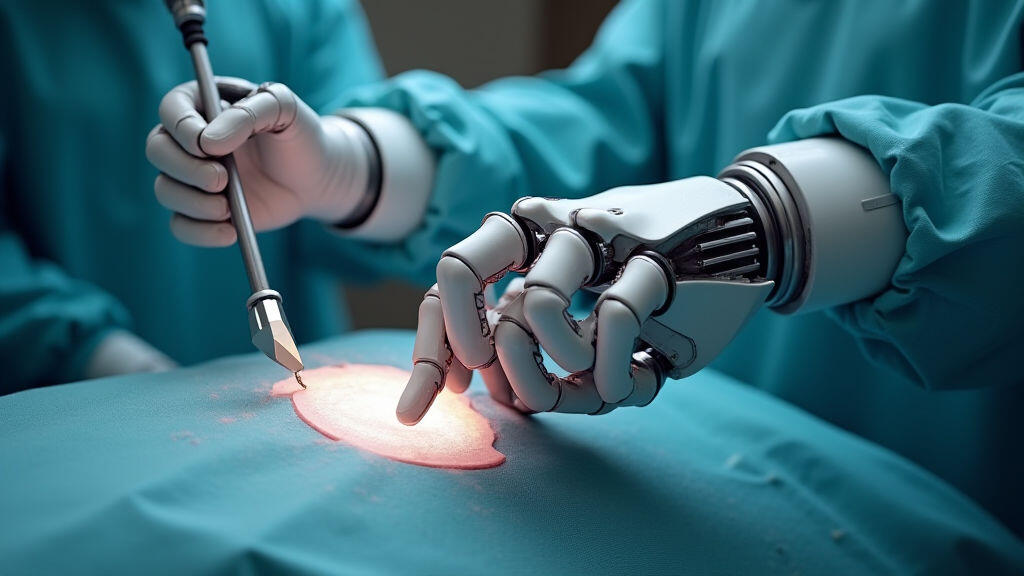Anjing Road, Xiaolan, Zhongshan, Guangdong, China
info@mes-drive.com
08.00 AM-09.00 PM

The robotics industry is experiencing exponential growth, fueled by advancements in artificial intelligence (AI), the Internet of Things (IoT), and increasing automation demands across various sectors. From manufacturing and logistics to healthcare and exploration, robots are becoming integral to modern workflows. At the core of most robotic systems lies the gear motor – a crucial component responsible for translating rotational motion into precise and powerful movements required for robotic manipulation, navigation, and overall functionality. Choosing the right gear motor is not a trivial decision; it directly impacts a robot's performance, efficiency, and longevity. This article delves into the key parameters that robotics enterprises must consider when selecting gear motors, exploring their applications and highlighting emerging trends shaping the future of this vital component. We'll also examine how recent advancements in AI are influencing gear motor design and control.
A gear motor is essentially an electric motor coupled with a gear reducer. The motor provides the primary rotational force, while the gear reducer multiplies torque and reduces rotational speed. This combination is essential for robots as it allows them to achieve high torque at lower speeds, crucial for tasks like lifting heavy objects or performing delicate manipulations. Different gear configurations (spur, planetary, worm, etc.) offer various advantages in terms of efficiency, torque density, size, and cost.
Selecting the appropriate gear motor requires a careful evaluation of several critical parameters:
1. Torque and Speed Requirements:
This is arguably the most important factor. Robotics applications demand diverse torque and speed profiles. For example:
Analyzing the robot's task requirements and calculating the necessary torque and speed ranges is paramount. Oversizing the motor is wasteful, while undersizing it can lead to performance bottlenecks and system failure.
2. Efficiency:
Energy efficiency is crucial for minimizing operating costs and extending battery life in mobile robots. Gear motors are not 100% efficient; losses occur due to friction and other factors within the gearbox.
3. Gear Ratio:
The gear ratio determines the torque multiplication and speed reduction. A higher gear ratio provides more torque at the expense of speed, while a lower ratio offers higher speed but less torque. Selecting the appropriate gear ratio directly aligns with the robot's torque and speed requirements, which were established in the first point.
4. Size and Weight:
In many robotic applications, especially those involving mobility, size and weight are critical constraints. Compact and lightweight gear motors are favored for mobile robots, collaborative robots (cobots), and smaller robotic arms. Innovations in motor and gearbox design are continually reducing size and weight while maintaining performance.
5. Precision and Backlash:
Precision is essential for applications requiring accurate positioning and movement. Backlash is the amount of play or looseness within the gears, which can introduce errors in positioning.
6. Environmental Considerations:
The operating environment of the robot (e.g., temperature, humidity, dust, vibration) must be considered.
7. Control and Integration:
The gear motor must be compatible with the robot’s control system. This includes:
Gear motors are ubiquitous in robotics and power a wide range of applications:

Several emerging trends are reshaping the field of gear motors for robotics:
MES-Drive is a leading provider of high-performance gear motors for robotics applications. They offer a comprehensive portfolio of solutions, ranging from compact DC gear motors to high-torque planetary gear motors and harmonic drive units. MES-Drive continually invests in research and development to stay at the forefront of technological advancements and provides tailored solutions to meet the unique needs of robotics enterprises. Their commitment to quality, innovation, and customer support has made them a trusted partner for leading robotics companies globally.
The selection of a gear motor is a fundamental step in developing successful robotic systems. By carefully considering torque requirements, efficiency, size, precision, environmental factors, and control integration, robotics enterprises can choose the right motor to optimize performance, reliability, and cost-effectiveness. With the rapid advancement of AI and automation, the demand for sophisticated and powerful gear motors is only going to increase. MES-Drive exemplifies the role of ingenuity in the rise of the current revolution, providing the foundation for a more automated future. As AI continues to refine control strategies and materials science enables further miniaturization and efficiency gains, gear motors will remain at the heart of the robotics revolution, paving the way for innovation across industries and reshaping our world.
Leave A Reply
Your email address will not be published. Required fiels are marked